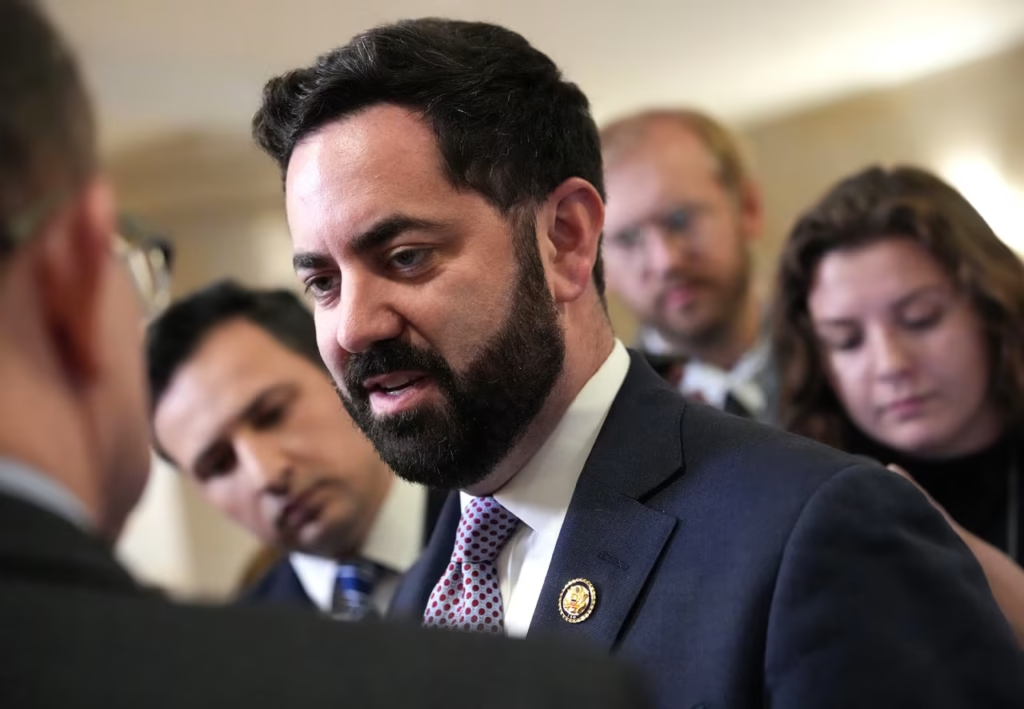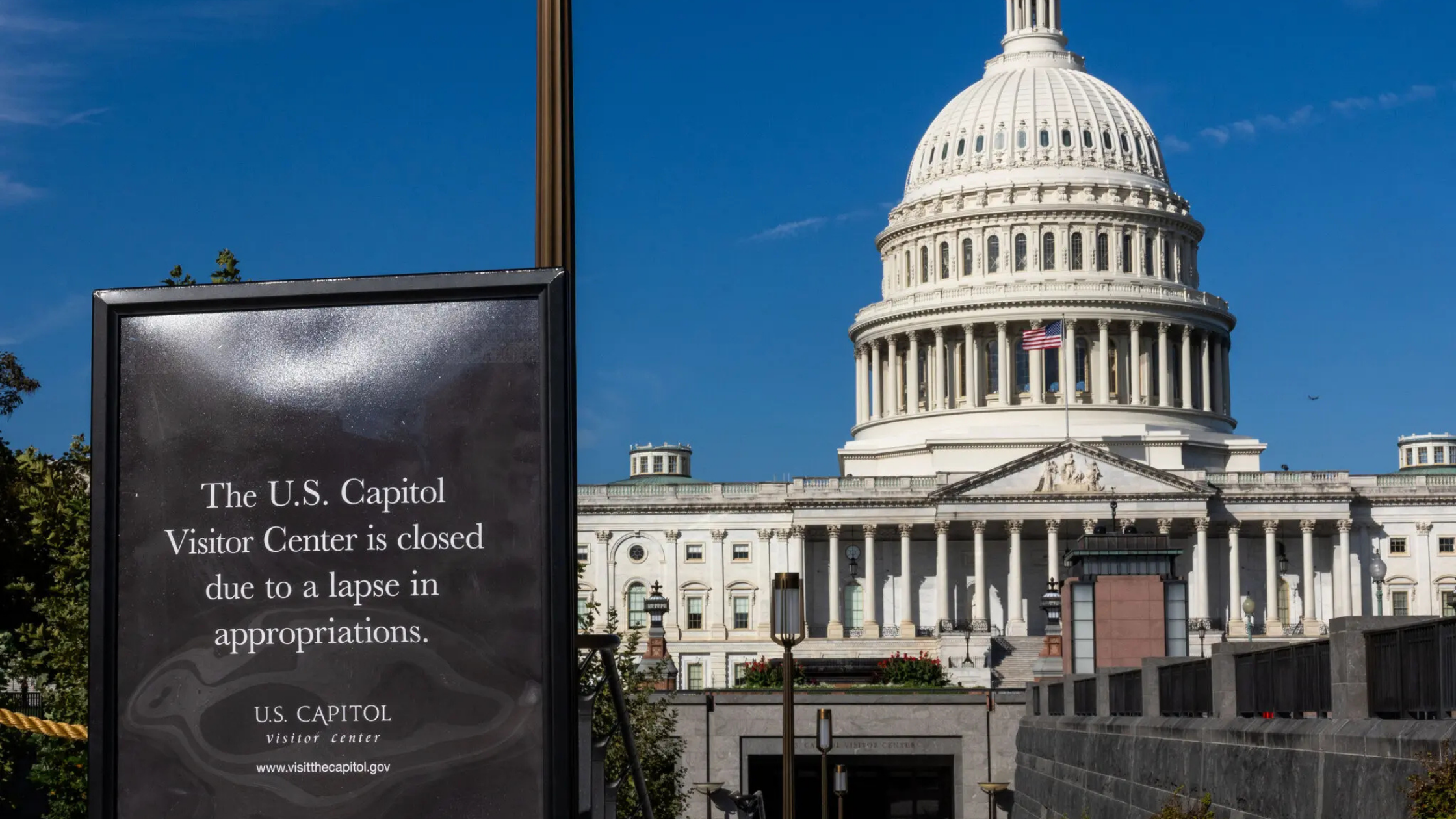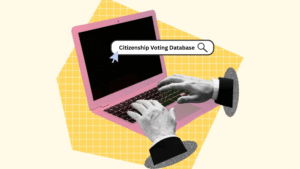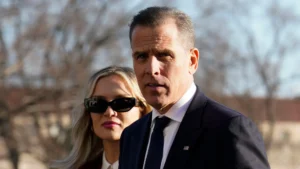U.S. Government Shutdown 2025 dominates headlines as Congress fails to pass new funding, triggering a shutdown that threatens services, workers, the economy, and the political landscape. Political observers, media outlets, and ordinary Americans alike are watching closely as both parties dig in.
The Shutdown Trigger: Why It Happened and Who’s at Fault
Congress passed two competing funding proposals in the days before October 1 — a Republican version that omitted extensions to Affordable Care Act (ACA) subsidies, and a Democratic alternative that included those subsidies along with Medicaid and social program reversals.
Neither bill cleared the Senate. All Republicans rejected the Democratic version, and only a few Democrats crossed party lines to support the GOP plan — not enough to meet the 60-vote threshold.
Democrats argue that failing to protect ACA subsidies would sharply raise insurance premiums for millions, and they see the shutdown pressure as a form of political coercion. Republicans counter that Democrats are using shutdown brinkmanship to force health care policy changes before passing a clean continuing resolution.
The result: on October 1 at 12:01 a.m. (EDT), The federal government officially entered a shutdown.
U.S. Government Shutdown; What’s at Risk: Services, Workers, Economy
Furloughs, Layoffs & Government Operations
Roughly 803,000 federal employees have been furloughed or assigned to work without pay. Many more programs are operating on reduced capacity, and some departments (especially in research, public health, and science) are scaling back entirely.
Unlike previous shutdowns, the Trump administration is threatening permanent layoffs, not just temporary furloughs — a shift that unions say may violate longstanding rules. The Office of Management and Budget has ordered agencies to prepare reduction-in-force plans.
Some federal websites have also adopted partisan messaging, blaming the “Radical Left Democrats” or similar labels for the shutdown. Ethics watchdogs have raised concerns that this might violate the Hatch Act (which limits political advocacy by government employees).

Impact on Services & the Public
Many essential services remain active: Medicare, Medicaid, border control, military operations, and air traffic control are continuing in a limited fashion. However, numerous federal functions—research grants, national parks, certain regulatory reviews, data releases, and health programs—are either frozen or drastically reduced.
Interestingly, Social Security and Supplemental Security Income (SSI) payments are set to continue on schedule.
On the economy, a White House memo warns of $15 billion in GDP loss per week if the shutdown persists, along with as many as 43,000 additional unemployed individuals. Consumer spending could drop by $30 billion as income from federal jobs dries up.
A More Intense Shutdown This Time
While shutdowns are not new in U.S. politics, several factors make this one more consequential:
- Permanent layoff threat instead of classic furloughs.
- Targeted funding freezes in Democratic-leaning states. For example, $18 billion in infrastructure funding for New York and $8 billion in climate projects were immediately paused.
- Partisan narratives on government websites, with direct blame messaging.
- Polarized stakes over health care policy, especially ACA subsidies set to expire at year’s end.
Because of all this, the current shutdown is drawing sharper lines than many past ones — making the politics deeper and the stakes higher.
Political Reactions & Strategic Moves
Democratic Pushback
House Democratic Leader Hakeem Jeffries has argued that Republicans are forcing the country into shutdown chaos rather than compromise. Senate Democrats, led by Chuck Schumer, remain largely unified in rejecting the GOP’s funding plan unless it includes ACA subsidies. However, internal tensions surfaced when three Democratic senators joined Republicans to support the GOP version — a breach of the party line, though insufficient to carry the measure.
Republican Position & White House Strategy
Republicans frame the impasse as Democrats refusing a clean funding bill, insisting policy details should follow later. The White House has responded aggressively — freezing funding for projects in Democratic states and deploying partisan messaging on agency websites. Meanwhile, Vice President J.D. Vance warned that layoffs would begin if the shutdown drags on.
Both sides are also jockeying for public opinion. Polls show broad disapproval of a shutdown across party lines, putting political pressure on both parties. New York Post
What Happens Next? Scenarios & Timeline
Upcoming Votes & Negotiations
Congressional leaders plan to bring the two versions back to the Senate floor on Friday. Both sides hope to break the deadlock through shorter extensions or concessions. Further behind-the-scenes negotiations are expected to intensify. The Washington Post
Potential Outcomes
- Short-term extension / stopgap deal
One side may concede sufficient ground to pass a short funding extension, restarting government operations even as policy debates continue. - Partial deal + phased reopenings
Some agencies or programs may be prioritized, reopening them selectively, while others remain offline. - Extended shutdown
If no deal is reached, the economic and human costs will escalate — with mounting pressure from public backlash, business losses, and internal divisions within parties.
At this writing, no resolution seems imminent, making the shutdown’s duration and fallout uncertain.
Why This Shutdown Stands Apart
This is not just another funding stalemate. The scale and strategies in play make 2025’s shutdown distinctive:
- Aggressive executive tactics — freezing funding selectively and using messaging to political ends.
- Economic fragility — interest rates are high, inflation persists, and the shock to consumer behavior could cascade into recessionary trends.
- Health care as central battleground — the fate of ACA subsidies touches millions and alters how the public interprets blame.
- Unions in fight mode — the threat of mass layoffs is provoking lawsuits and legal pushback.
- Information economy at risk — many scientific, data, and regulatory functions are shuttered, slowing critical updates and research. Nature
Because of all this, this shutdown may leave longer shadows across policy, governance norms, and public trust.
What It Means for Citizens
- Delays in services — permit applications, regulatory approvals, federal grants, and public programs may stall.
- Unpaid work — many federal employees will work without pay; many more will be furloughed.
- Health coverage risk — without expanded subsidies, insurance premiums could spike for vulnerable Americans.
- Economic ripple effects — as public and private spending slows, the broader economy could feel shockwaves.
- Political stakes are high — public anger may shift blame, influencing midterm and future elections.
Given the intensity of the standoff, everyday Americans should brace for disruptions and monitor congressional updates closely.
Conclusion
The U.S. Government Shutdown of 2025 represents one of the more severe and politically charged funding gaps in modern history. With both parties entrenched and stakes raised higher than usual, the next round of negotiations could determine not just which services endure, but how American citizens interpret the legitimacy of governance itself. While the immediate hope is for a short resolution, deeper fissures in health care, federal labor policy, and budget reform are all laid bare.
Stay ahead of the unfolding story — this is a moment when choices in Washington directly ripple into the lives of millions.
Subscribe to trusted news sites like USnewsSphere.com for continuous updates.





